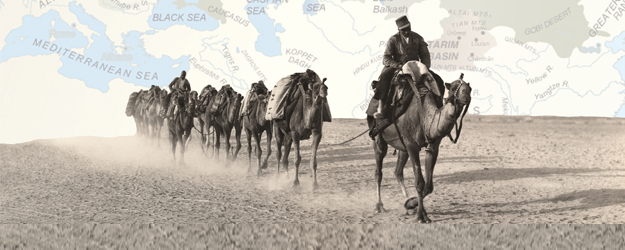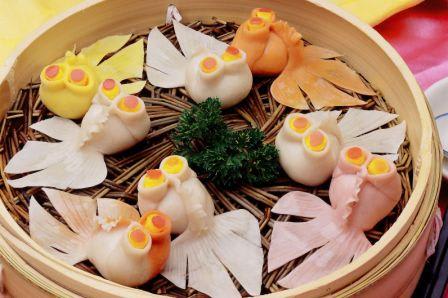Boundless sand, caravan walking alone, foreign dancing girl, doughy tribes, routhless horses bandits in dersert .....for thousands of years, the nobilities, peddlers and menial servants, beggars and prisoners all left their marks here. In the time 2,000 years ago without any modern means of transport such as railway and planes, etc. a "passage" connecting Europe and Asia had been created. Silk, fur, religion... were delivered and exchanged on the "passage". By which Asia and Europe, the Oriental and the West, were tied together. The "Passage" is just Silk Road. It is not only a bridge for trade on the Eurasian continent, but also a path of ethnic migration of human, and also the place of exchanging and gathering of the Oriental Culture and the Western Culture.

The concept of Silk Road was first suggested in 1877 by Ferdinand von Richthofen, a German geographer, to specify the road for transporting silk west to Rom from China and the transport between the Oriental and the West generally. Silk Road consists of several branches. For a l ong time, Silk Road, starting from Chang'an (Xian today), westward by the way of Hexi Corridor, out of the western region to Central Asia then to the Roman Empire, was considered as the holy road for exchanges between the Oriental and the Western, namely the desert Silk Road.
Three Routes of Silk Road

Generally Silk Road is divided into three sections: east setion: from Luoyang (more information from Luoyang travel guide), Chang'an to Yumen Pass and Yangguan Pass; middle section, from the west of Yumen Pass and Yangguan Pass to Congling (Pamir Plateau today); and west section: westward from Congling, via Central Asia, Western Asia till to Europe. Of which the middle section passing through Xinjiang also consists of three routes, namely southern route and northern route. The southern route starts east from Yangguan Pass, along southern brink of Takimakan Desert, Via Ruoqiang, Hotan and Shache, etc to Congling; the central route starts from Yumen Pass, along northern brink of Takimakan Desert via Lop Nur, Turpan, Yanqi, Kuqa, Aksu and Kashi to Fergana Basin; the northern route starts north from Anxi, via Hami, Jimusar and Yining till Suyab.
Historical Sites along the Silk Road

Thousand years had passed over sounding camel bell, and no one knows how many city walls and stories were buried in sand. As a trace of the history that was splended in thousand years, 19 national key conservation cultural relics along Xinjiang section of the Silk Road stand to tell you something of the history, namely Jiaohe Ancient City, Gaochang Ancient City, Astana Ancient Tombs, Taizang Tower Site, Baizeklik Grottoes, Qigxing Buddha Temple Site, Milan sites, Subashi Buddha Temple, Senmusaimu Grottoes, Kezer Gaha Beacon-Fire, Kezer Grottoes, Id Kah Mosque, Niya site, Andier Ancient City site, Rewak Buddha Temple site, Mazatag Garrisoning Castle site and Damagou Buddha Temple.
Nowadays, many adventure-lovers choose Silk Road to trace the history during Trips to China, so if you are interested in history of Silk Road, you can consider Xinjiang to explore more.













